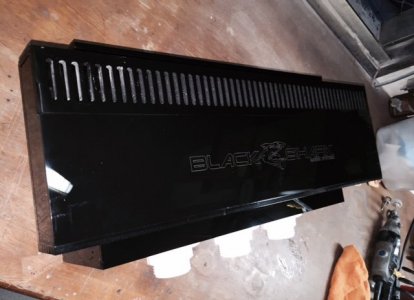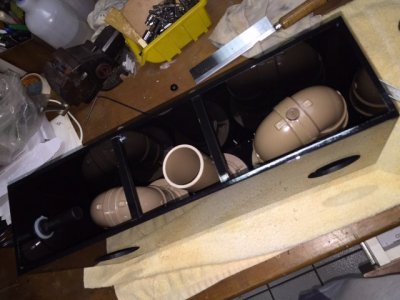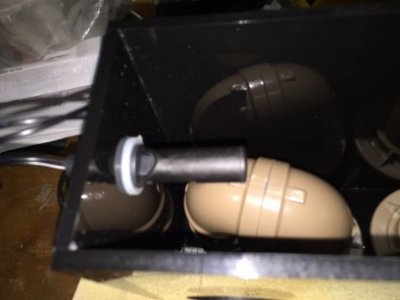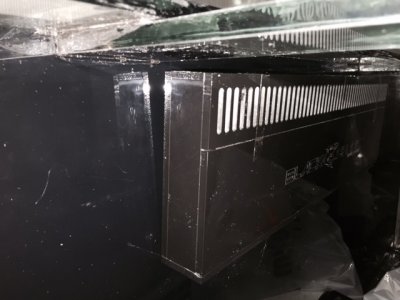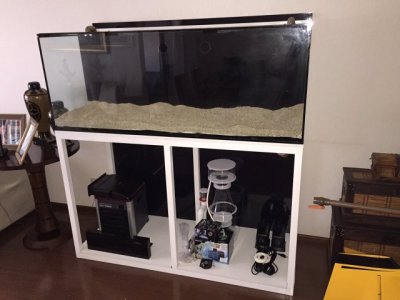Synergy Reef (aka Ghost) Overflow
Synergy Reef (aka Ghost) Overflow
BeAn,
Thank you for sharing your knowledge and insight with this clever system. I have the Synergy Reef overflow, which says right on their website that your system works with it, but I could not find clear instructions on how to make it happen. I thought I'd share my experience with adapting your system to the external overflow, so others can benefit. I have achieved complete silence with 1" pipes running at 600 gph.
Here is a link to the overflow:
http://synergyreef.com/product/16-synergy-reef-overflow/
This is the piping configuration I used inside the box:
From left to right: open channel, emergency standpipe, siphon.
The open channel has a 1/4" hole drilled right into the top of the elbow. I eliminated the air line, because I wanted to be able to close the lid on the box. The water level bisects the horizontal section of the open channel, so it is below the air hole and the emergency standpipe, but completely submerges the siphon. Here is a view from the top, with the system running so you can see the water level:
You can tell from this view that the siphon is completely submerged, and the open channel is not. This is important, keeping the air hole above water level under normal conditions.
External plumbing from the box:
And finally, where the drains exit into the sump:
In this picture, the system is running at full 600 gph. And you can see there are NO bubbles coming from any drain. It is silent, as designed! It also passed all the tests. All the drains are 1", but a single 1" drain running at full siphon can easily accommodate the 600 gph of flow I'm putting through it. When I close off the full siphon, the water level rises until it covers the hole in the OC. A little bit goes into the emergency standpipe, but then the OC converts to full siphon and level immediately drops to the level of the air hole. Once air starts being sucked in, it reaches an equilibrium at the level of the air hole, making a gurgling/sucking sound. That would be my audible alarm that the full siphon is clogged!
The same goes for if the OC were clogged, except the gurgling would come from the emergency standpipe.
Another thing to note is that even though the siphon exits several inches under the water level of the sump, there are no problems with stopping and restarting the flow. I think enough water is retained in the siphon to purge the air. I did notice that when I started the system from completely dry, the siphon wouldn't start until I closed off the OC with my hand, thereby letting all the air purge through the siphon. If I have problems with that in the future, I can simply cut the siphon a little shorter in the sump.
So that's my experience with your system and the Synergy Reef or Ghost overflow. I hope this little write-up helps someone else as your system has helped me. Thanks again!

